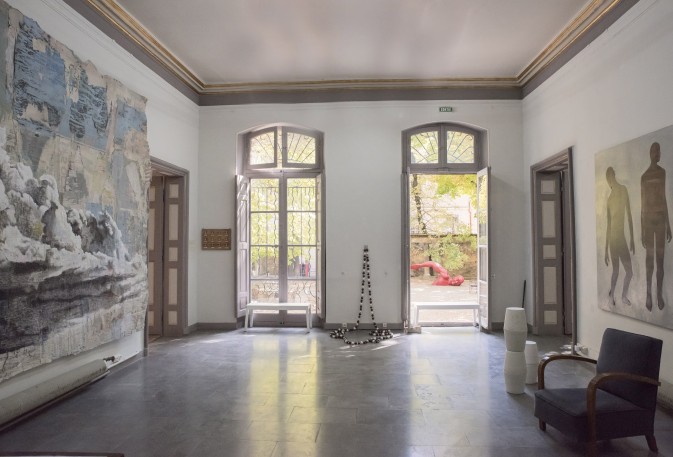01 June 2016 -
18 September 2016


Ever since the birth of contemporary art, pure aesthetic value has ceased to be the dominant guiding principle of the artist. Instead, a piece of art has become a symbol, a vehicle for diverse messages. It conveys the statements of the artist, related to their experience, their environment, and their influences. As well as this, often-decontextualized readings are brought to the piece by collectors, whose aesthetic and chronological approaches combine as they put pieces together to form a collection, presented in a new environment. From then on a narrative discourse is born, whose vocabulary is enriched over time through different encounters, journeys and critical perspectives.
It is clear from the first room that our collectors have embraced the aesthetic codes of the last century while simultaneously opening themselves up to new contemporary practices. The detailed patterns, visual lyricism and gold detailing of Mme S’s work evoke traditional Japanese prints as much as they do the work of Gustav Klimt. Her unique style is the result of a distinctive creative practice, wherein apparent voluptuousness and sensuality transform under our gaze into explosive power and energy as we are drawn ever further into the details of the design.
‘Chair M’ from Atelier ALEXandrin offers a contemporary take on the rocking-chair, an evocation of childhood that is also found in the matching square coffee table whose components are scattered around the room, inspired by the conventions of geometric puzzles. In contrast to this angular minimalism, the lounge chair by Charles and Ray Eames is a classic from 1956, a time that had already witnessed François Arnal’s experiments with black canvas and fabric, in a style that may now remind us of Pierre Soulages’ ‘Outrenoir’ (“beyond black”) practice.
This exhibition also presents the works of Xavier Spatafora, Catherine Starkman, Thomas Boulmier, Ced Vernay, Marcello Geppetti and Joelle Anjuma.
La chaise M d’ALEXandrin propose un point de vue contemporain sur le rocking-chair, évocation de l’enfance que l’on retrouve également avec sa table basse carré, dont les éléments disséminés dans la pièces s’inspire des codes des casse-têtes géométriques. Le lounge chair de Charles et Ray Eames est un classique de 1956, époque à laquelle François Arnal avait déjà expérimenté avec des toiles faites de noire et de matière dans un style qui n’est pas sans rappeler le travail de l’Outrenoir par Pierre Soulage en 1979.
Cette exposition présente également le travail de Xavier Spatafora, Catherine Starkman, Thomas Boulmier, Ced Vernay, Marcello Geppetti et Joelle Anjuma.

